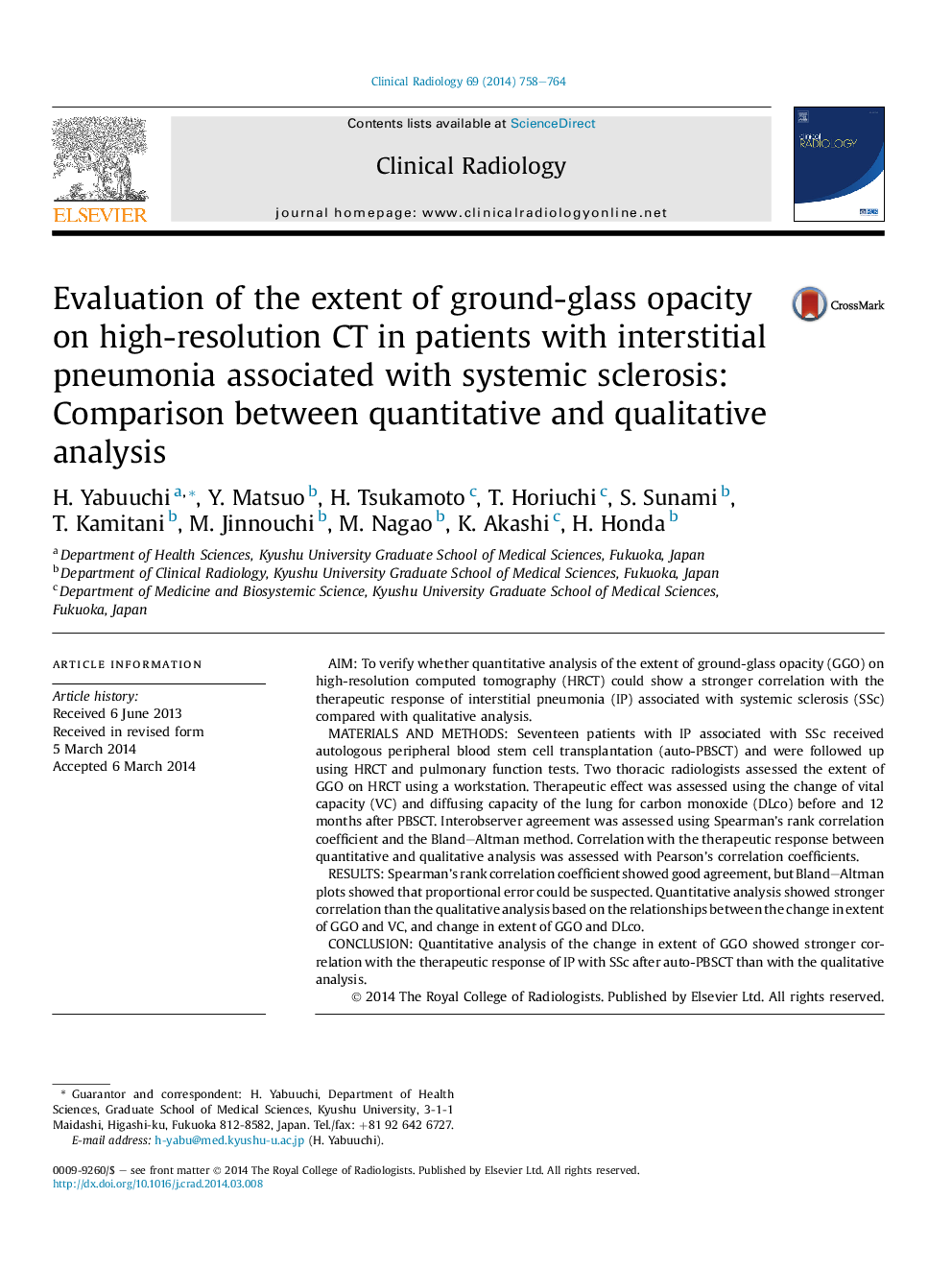| Article ID | Journal | Published Year | Pages | File Type |
|---|---|---|---|---|
| 3981934 | Clinical Radiology | 2014 | 7 Pages |
•Quantitative analysis of GGO in IP showed strong correlation with therapeutic effect.•Qualitative analysis might be limited by interobserver variance.•Other parameters including reticular opacities remain in a future investigation.
AimTo verify whether quantitative analysis of the extent of ground-glass opacity (GGO) on high-resolution computed tomography (HRCT) could show a stronger correlation with the therapeutic response of interstitial pneumonia (IP) associated with systemic sclerosis (SSc) compared with qualitative analysis.Materials and methodsSeventeen patients with IP associated with SSc received autologous peripheral blood stem cell transplantation (auto-PBSCT) and were followed up using HRCT and pulmonary function tests. Two thoracic radiologists assessed the extent of GGO on HRCT using a workstation. Therapeutic effect was assessed using the change of vital capacity (VC) and diffusing capacity of the lung for carbon monoxide (DLco) before and 12 months after PBSCT. Interobserver agreement was assessed using Spearman's rank correlation coefficient and the Bland–Altman method. Correlation with the therapeutic response between quantitative and qualitative analysis was assessed with Pearson's correlation coefficients.ResultsSpearman's rank correlation coefficient showed good agreement, but Bland–Altman plots showed that proportional error could be suspected. Quantitative analysis showed stronger correlation than the qualitative analysis based on the relationships between the change in extent of GGO and VC, and change in extent of GGO and DLco.ConclusionQuantitative analysis of the change in extent of GGO showed stronger correlation with the therapeutic response of IP with SSc after auto-PBSCT than with the qualitative analysis.
